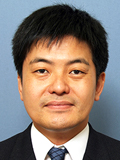RIKEN BioResource Research Center (BRC®) Next Generation Human Disease Model Research Team
Team Director: Takanori Amano (Ph.D.)
Research Summary

For development of mouse models which recapitulate pathology of intractable diseases, aging-associated diseases and lifestyle diseases, the genome-editing technology is used to produce knock-in point and multiple mutant mice based on genomic information of patients. The developed mice are analyzed and evaluated through the standard platform built by the International Mouse Phenotyping Consortium. We collaborate with external clinical experts for disease mechanisms and pharmacokinetics to establish POC (proof-of-concept) in preclinical studies. The disease models together with associated information useful for diagnosis, therapies and drug discovery will be distributed to the biomedical research community.
Main Research Fields
- Biology
Related Research Fields
- Biological Sciences
- Medicine, Dentistry & Pharmacy
- Genetics/Chromosome dynamics
- Developmental biology
- Human genetics
Keywords
- disease model
- mouse genetics
- genome
- variation
Selected Publications
- 1.Saito A, Tahara R, Hirose M, Kadota M, Hasegawa A, Kondo S, Kato H, Amano T, Yoshiki A, Ogura A and Kiyosawa H.:
"Inter-subspecies mouse F1 hybrid embryonic stem cell lines newly established for studies of allelic imbalance in gene expression"
Experimental Animals 24-0002. (2024). - 2.Kawashima H, Nishimata S, Shinji S, Morishima Y, Tsutsumi N, Kashiwagi K, Amano T, Tamura M, Ayabe S and Nakashima K.:
"Three Siblings with Aarskog Scott Syndrome Together with Mental Retardation and Giant Megacolon"
Glob. J. Pedia. 2, 1, IFN1000278. (2024). - 3.Tada R+, Higashidate T+, Amano T, Ishikawa S, Yokoyama C, Kobari S, Nara S, Ishida K, Kawaguchi A, Ochi H, Ogino H, Yakushiji-Kaminatsui N, Sakamoto J, Kamei Y, Tamura K and Yokoyama A.:
"The shh limb enhancer is activated in patterned limb regeneration but not in hypomorphic limb regeneration in Xenopus laevis"
Developmental Biology 500, 22-30. (2023).
(+Authors equally contributed.)
Lab Members
Principal investigator
- Takanori Amano
- Team Director
Core members
- Tra Thi Huong Dinh
- Research & Development Scientist
- Ayaka Saito
- Postdoctoral Researcher
- Chigusa Imura
- Technical Staff II
- Mayu Shiokawa
- Technical Staff II
Contact Information
3-1-1 Koyadai, Tsukuba,
Ibaraki, 305-0074
